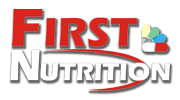If you’re a student of bodybuilding, you know that the concept of not just overload, but progressive overload, is critical to long-term success. That is, it isn’t enough to increase the demands on your muscle fibers. As they adapt by growing bigger and stronger, you have to continue increasing the demands made on them.
Still, there’s a looming setback none of us can escape called diminishing returns. Big-time gains you initially achieved when you first started a program become harder and harder to come by as the weeks and months roll by. Eventually, we all reach a plateau, a point in which further gains just won’t occur – no matter how hard we try.
If you’ve been paying attention, you’ll know that’s when it’s best to make larger-scale changes in your training: substituting out exercises, changing set-and-rep schemes, pursuing slightly different goals, adjusting rest times, among other factors. If you’ve reached a plateau in your own training, it’s safe to assume it’s time to stop doing what’s no longer working. (Notably, a poor diet can also moderate muscle and strength gains, so if you haven’t addressed that variable you’re only making the climb even steeper.)
There are innumerable ways to alter the training stimulus, and some have proven better than others at achieving particular goals, be it a focus on maximizing strength, muscle size, endurance, or even speeding fat loss. An easy one I use occasionally is to simply take my current routine and then alter just one aspect of each exercise.
That single change can relate to a repositioning of body, foot or hand placement, altering grip width or stance, pushing a heavier or lighter load to knock you out of your current rep range, substituting one kind of equipment for another, like cables instead of dumbbells, or simply changing a motion’s primary pathway. So, for instance, on leg day I could do a leg press with my feet on the upper edge of the sled rather than at the bottom. (That alone shifts some of the focus away from the quads and onto the glutes and hamstrings by decreasing the range of motion around the knees and increasing it around the hips.)
Small changes work the target musculature slightly differently by modifying the muscle-recruitment pattern. String a whole workout of them together and you create an opportunity to achieve a more significant (and even new) training stimulus. It also forces you to keep your mind focused, thinking about what you’re doing and what you want to achieve, and the different ways to make such small changes. So let’s go through a sample leg workout and see how this strategy can be implemented. Keep some of these ideas in mind when training other body parts, which can easily be refreshed with a similar approach.







